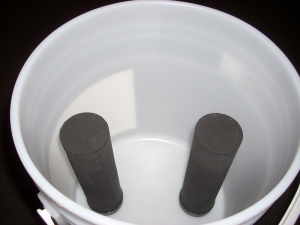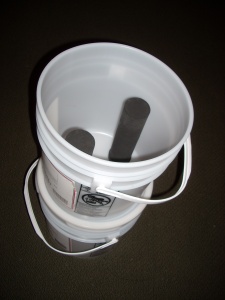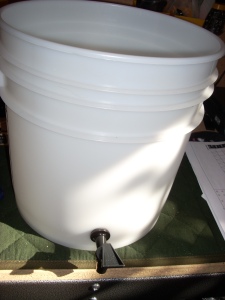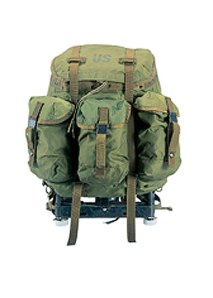This is the first in a series on permanent shelter that we’ll be publishing here at Plan | Prepare. The purpose of this series of articles is to discuss permanent shelters. Most of us already have a permanent shelter. However, that shelter may or may not be a viable location for long-term survival. Numerous first-hand accounts from disaster survivors around the world all have a similar theme: There is no one-size-fits-all shelter solution for every potential disaster. In some cases, bugging in at your urban or sub-urban location may be the best. In other cases, bugging-out to a rural location may work better. Each option has its plusses and minuses.
Before we get too far into this discussion, let’s define “permanent shelter”.
Webster’s Free Online Dictionary defines “permanent” as: continuing or enduring without fundamental or marked change and “shelter” as: something that covers or affords protection
So, a permanent shelter is something durable (enduring) that provides cover or protection. Simple enough, right? Maybe.
Many people will disagree on the definition of durable, enduring or continuing. The Bedouins, for instance, have lived in tents for centuries. Here in the United States, we might not consider a tent a permanent shelter.
We’re starting to spiral here. Let’s simplify and see if we can all agree.
For the sake of these articles, let’s say that a permanent shelter is synonymous with a house. It might be large or small. It might have a wood, stucco or brick exterior. It might be wood-frame or poured concrete. There are thousands of variables, but pretty much everyone has a solid mental picture of a house. In case you’re a Bedouin, I’ve included a picture of a house below.
Now that we have that settled, let’s discuss the purpose of a permanent shelter as it relates to survival and disaster preparedness.
A permanent shelter should:
- Provide protection from the elements
- Provide protection from people or other predators
- Provide adequate space to accommodate those living within its confines
- Provide a sense of security
- Provide a sense of privacy
- Provide a sense of civility (a representation of a civilized world)
- Provide a hub or touchstone for a household or family
Obviously, protection from the elements is key to survival – particularly in harsh climates. A permanent shelter’s ability to protect its inhabitants from rain, snow, cold and even heat is critical to survival.
Most permanent shelters are designed with some capability to protect their inhabitants from both two-legged and four-legged predators. The average permanent shelter, however, is relatively vulnerable to determined two-legged predators. Glass windows can be smashed. Doors can be pried open. Let’s face it, the average “home” poses only a small deterrent to a motivated attacker or looter. If we spend too much time thinking about this, the sense of security provided by the permanent shelter begins to erode.
The concept of adequate space varies widely as you travel from region to region. It’s not uncommon for entire families in Third World countries to live in houses the size of a closet in a suburban home in the United States. Here in the U.S., it’s not all that uncommon for entire rooms of larger houses to go unused for weeks or months. However, feeling that we have adequate space plays into our mental and emotional state of being. The Rule of Threes suggests that we can live for three months without hope. Living in a permanent shelter far smaller than one is used to living in can have an impact on one’s ability to keep hope alive.
Generally, our sense or privacy is maintained by shutting out the world outside. We draw the curtains, close the door and cloister ourselves away to keep prying eyes out of our business. Privacy helps breed a sense of well-being. Imagine having to bathe or change clothes in public and you’ll begin to understand why privacy is important to morale.
For many modernized societies, the permanent shelter has become an icon of civilization. Perhaps you have traveled to a country where many of the citizens live in huts. Prejudice aside, Americans, Western Europeans and others look at those huts and see temporary shelters. As a result, we make assumptions that the inhabitants of those huts are less civilized than we are. We have become accustomed to houses … permanent shelters that have a certain look about them, a certain … permanency in their construction. Lacking that look and feel of permanency, we perceive a lack of civilization as well.
Finally, the home or permanent shelter provides a hub … a touchstone for the individuals who live there. Whether it be a traditional family or any other type of household, home is where the heart is. Ask yourself, why are so many adult children moving back in with their parents these days? Why don’t they simply join communes or share space with other young adults? Almost without exception, the home of their youth represents security at a time in their life when many feel insecure. Is it the structure that gives them that sense of security? Only in part. It is the structure, combined with its inhabitants – their parents and, possibly, siblings – that gives them a much-needed sense of well-being.
So, as we look at the role of the permanent structure in survival, we see that only a fraction of its value is physical in nature. Certainly, human beings need protection from the elements and from those who would do them harm. What humans also need is hope. Hope and emotional well-being are the things that make the permanent structure – and its inhabitants – so critical to long-term survival.
Food for thought as you consider your preparations: Is your primary home adequately equipped for survival? Do you need to establish alternative structures in different locations? Are your permanent shelters truly secure? If not, how can you make them more secure? And, perhaps most importantly of all, will the members of your household be with you when you face disasters and uncertain circumstances? Will you have the touchstone of hope to help you maintain your survival mindset?
Plan | Prepare








